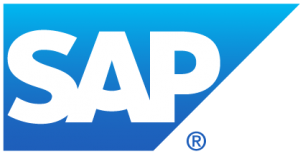Over the past decade, supply chains have increasingly become outsourced, more complex, and more vulnerable. More than ever, companies must anticipate risks, respond to disruptions, and manage demand and supply in real time. Coupled with all this, sustainability has become an economic imperative. The environmental, social and governance (ESG) impacts of corporate decisions are becoming an integral part of corporate strategy and management.
As governments, companies and individuals adapt to tackling climate change, there is an increased pressure to stop most of the plastic waste from ending up in our oceans, being burnt or sent to landfills and instead, use this waste to produce new products in a circular and certified sustainable manner.
Digital twin token as an enabler for the circular plastics economy
As new products made from certified circular recycled plastic waste are physically indistinguishable from conventional products, companies need an easy way to provide reliable and auditable proof of the sustainability and circularity content to their customers and stakeholders. GreenToken by SAP® was born to address this challenge.
Over their 30-year careers in commodity trading, the cofounders of GreenToken by SAP® have realised it is almost impossible to link the commodity raw material to ESG facts, even though these actually are among the key features that influence customer decisions. To reverse this situation, an innovation of tokens that represent underlying raw material as a digital twin was triggered and prompted the success of the GreenToken by SAP®.
Using digital twin tokens based on blockchain technology, GreenToken by SAP® allows for end-to-end supply chain transparency and traceability. Raw materials can be tracked from the first point of aggregation along the supply chain to the end customer.
The two cofounders, both SAP employees, pitched the idea to the SAP.io Venture Studio in 2019. Following a rigorous selection process, they were one of two teams selected from over 300 applicants who were given the opportunity to start an internal SAP venture, supported by funding from SAP Venture Studios.
Over 65 companies were consulted as part of the innovation process. Chemical champions BASF, IMCD, SCG, and Mitsubishi Chemical Europe piloted GreenToken by SAP® to help their customers understand how much recycled material is contained in their products. SAP also consulted with standardisation agencies, such as ISCC, and auditors, such as SGS. After two years of development, the product is now part of the SAP sustainability suite of tools.
By capturing unique attributes and information such as commodity origin or carbon footprint, GreenToken by SAP® enables customers to accelerate the industry’s shift to circular and hence certified sustainable material use. GreenToken by SAP® is applicable as a network-based solution for effective and efficient traceability and transparency of circularity across multiple supply chain partners, or within a single company. Effectively, it is applicable to any industry basing its production on raw material, to prove ESG facts about its origin, or how it was made or processed. Thanks to its features, it supports neither deforestation in agri raw material sourcing nor child labour mineral sourcing, amongst others.
A wider commercialisation of the solution is underway, marked by a deal with a big European consumer packages goods company.
Although not developed as a publicly co-funded initiative, GreenToken by SAP® was designed with existing and upcoming environmental policies in mind. The solution is to meet material traceability standards in Europe, i.e. requirements raising from the EU Green Deal package, German Lieferkettensorgfaltspflichtengesetz, and the International Sustainability and Carbon Certification (ISCC).
As a result, GreenToken by SAP® is successful as a stand-alone intra company system for tracking sustainability credits to ISCC+, ISCC EU, or RedCert standards.
Following its creation, GreenToken by SAP® was invited to join the INCREASE project, funded by the EU (https://increace-project.eu/about-us/).

Towards an innovation friendly environment
As new circular content EU standards come into force, GreenToken by SAP® can allow EU companies to easily show their commitment to run their business sustainably, especially as the same token system has already been proven to have hundreds of applications across the entire value chain for many different products and industries.
That said – the story of the GreenToken by SAP® is also a story of a legislative framework that is adapting too slowly to ground-breaking innovation.
The issue starts with a lack of straightforward EU definitions – for example: what does circular chemicals /plastic mean according to EU certification rules? How is low carbon green hydrogen defined? How is equivalence achieved for circular products coming from outside the EU?
Secondly, there is a lack of incentives that would overcome companies’ reluctance to switch to more innovative solutions. For example, an EU plastic tax could be a great incentive to make EU companies report on their circular products, especially if they get financial incentives for investing in circular product production. Law makers could be more creative in boosting the business case for innovations that contribute to important political goals.
Last, the review of legal data agreements, even though necessary to conform to GDPR, often slows down the development and roll out of new technology solutions. A simplified way to hold conformity reviews under GDPR, especially when no personal data is processed, would speed up innovation.
Europe has the technological capacities, talent and industrial liaisons to enable ground-breaking innovation – yet innovation often lacks a business case. We can change this by bringing regulation in sync with political goals.

